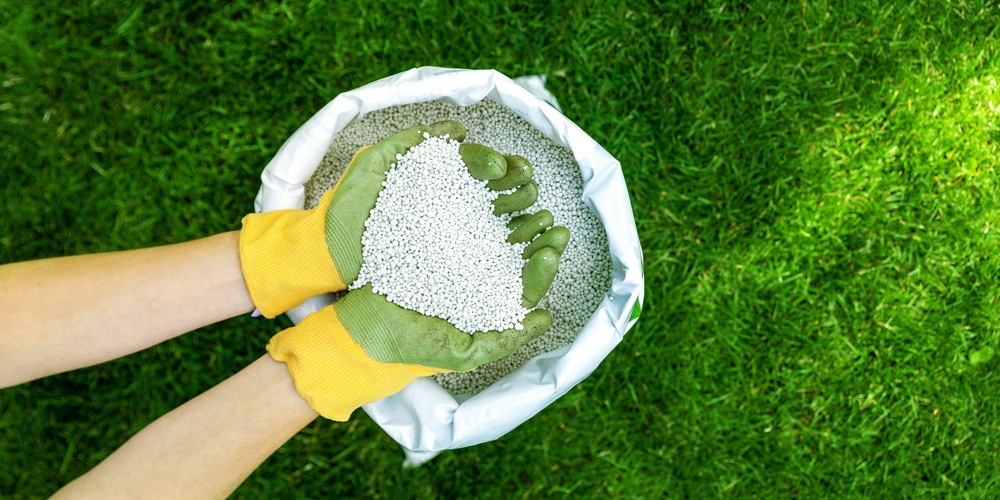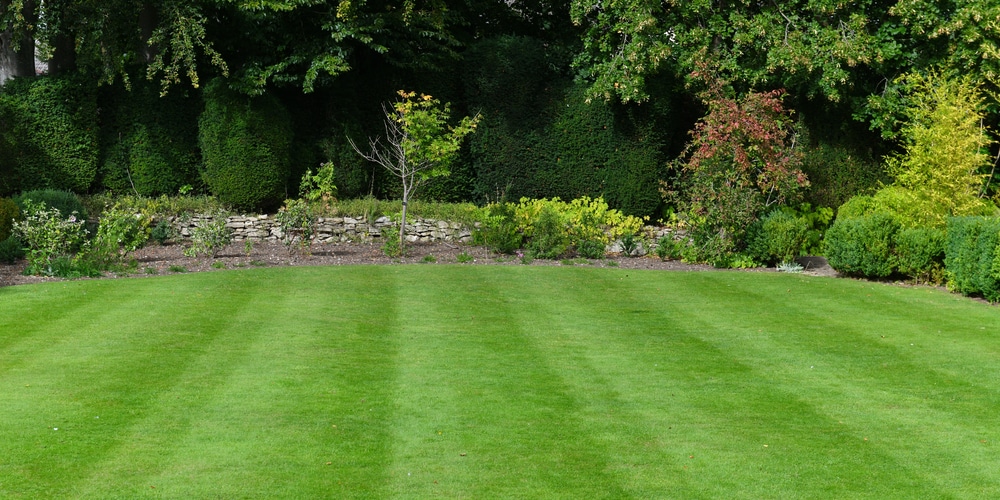When choosing the right fertilizer for your lawn, consider various factors like lawn type, soil condition, and the desired outcome. Here’s a decision tree to guide you through the process:
- Step 1: Test Your Soil
- Test soil to determine nutrient needs. If you haven’t tested, proceed to step 2.
- Step 2: Determine Lawn Needs
- If it’s early spring or you haven’t fertilized in a while, proceed to step 3.
- If it’s mid-season and lawn is looking lackluster or yellowing, proceed to step 4.
- Step 3: Choose a Starter Fertilizer
- For new lawns or major seasonal feedings, pick a balanced fertilizer (e.g., 10-10-10 or 20-20-20) to promote overall health. Then, proceed to step 6.
- Step 4: Identify Primary Requirement
- If the lawn needs greening (rich color), choose a nitrogen-rich fertilizer and proceed to step 6.
- If the lawn needs root growth or repair, opt for a fertilizer high in phosphorus and proceed to step 6.
- If improving resistance to drought and cold is a priority, select a potassium-rich fertilizer and proceed to step 6.
- Step 5: Consider Lawn Type and Region
- For cool-season grasses (e.g., fescue, bluegrass) in northern regions, opt for slow-release nitrogen fertilizers to prevent rapid growth spurts.
- For warm-season grasses (e.g., Bermuda, Zoysia) in southern regions, choose a fertilizer that supports growth during warmer months.
- Step 6: Select the Type of Fertilizer
- Decide between granular and liquid fertilizers:
- Granular: Easier for DIY, slow-release options available, good for uniform application.
- Liquid: Faster absorption, more uniform distribution, ideal for quick corrections.
- Decide between granular and liquid fertilizers:
- Step 7: Check for Specialized Additives
- If your soil test shows a lack of micronutrients (like iron or sulfur), choose a fertilizer that includes these.
- If weed control is also needed, select a weed-and-feed product suitable for your type of grass.
- Step 8: Apply Fertilizer
- Follow the manufacturer’s instructions on application rates and timing.
- Ensure even coverage using a spreader for granular or a sprayer for liquid fertilizers.
- Step 9: Water Your Lawn
- After application, lightly water the lawn to help the fertilizer penetrate the soil, unless the product specifies to apply to wet grass.
By following these steps, you can effectively choose a fertilizer that will help your lawn thrive in its specific conditions and meet your landscaping goals.
Lawn Fertilization
Proper lawn fertilization in early spring supports robust growth and health throughout the season.
It’s important to tailor your approach to meet the specific needs of your lawn, which can be significantly impacted by the local climate, soil type, and grass species.
Nutrient Requirements of Early Spring Lawns
Your lawn wakes up from winter in need of a nutritional boost to kickstart the growing process. Here’s what it craves:
- Nitrogen: Vital for leaf growth, giving your lawn that lush, green color.
- Phosphorus: Encourages strong root development, important for new growth.
- Potassium: Strengthens resistance to disease and stress from temperature changes.
Soil Testing Before Fertilization
Before reaching for the fertilizer spreader, consider this crucial step:
- Soil pH: The acidity or alkalinity of your soil affects nutrient availability.
- Nutrient Levels: Identifying existing nutrient levels helps tailor your fertilizer choice.
- Organic Matter Content: Good soil structure and nutrient release depend on organic matter.
Types of Fertilizers for Spring
As you prepare your lawn for spring, selecting the right type of fertilizer is crucial for healthy growth.
Each variety has specific benefits that cater to the needs of your turf as it emerges from dormancy.
Slow-Release Fertilizers
- Gradual Nourishment: Slow-release fertilizers release nutrients over an extended period, typically several weeks to months, reducing the risk of overfeeding and minimizing maintenance.
- Consistency: They provide a steady supply of nutrients, promoting consistent growth and greening without sudden surges.
Fast-Acting Fertilizers
- Immediate Results: Fast-acting fertilizers deliver nutrients quickly, ideal for lawns needing immediate assistance or for patch repair.
- Application Considerations: Careful timing and application rates are essential to avoid burning the grass or causing excessive growth.
Organic Options
- Environmental Friendliness: Organic fertilizers are made from natural materials, improving soil health and supporting the ecosystem.
- Health and Safety: They pose fewer health risks to pets and children who play on the lawn and are often recommended for their long-term lawn health benefits.
Remember, your choice should align with your lawn’s specific needs and your personal lawn care philosophy.
Whether you opt for the extended feeding of slow-release options or the immediate boost from fast-acting fertilizers, be sure to follow the product’s instructions for the best results.
Organic options can provide a more sustainable approach, enriching your lawn while being kind to the environment.
Application Techniques
Proper application techniques for lawn fertilizer in early spring are crucial for ensuring your lawn has a healthy start.
Knowing the right ways to spread fertilizer and when to apply it can make all the difference.
Spreading Methods
- Drop Spreaders: Ideal for precision, drop spreaders allow you to distribute fertilizer evenly by releasing it straight down between the wheels. Use this method for tight control to avoid product wastage.
- Rotary Spreaders: Also known as broadcast spreaders, they are perfect for covering large areas quickly. The fertilizer is flung out in an arc, so make sure to overlap passes for uniform coverage.
Timing and Frequency
- Application Timing: Your first fertilizer application should be when the grass begins to actively grow, which is typically late spring. Avoid early spring as the grass is still strengthening its root system.
- Frequency: A single application of a slow-release fertilizer can be enough for the start of the season.
- However, if using quick-release products, plan for a second application four to eight weeks later to maintain lawn health.
Maintaining Lawn Health
To ensure your lawn stays lush and healthy after you’ve applied fertilizer in early spring, it’s critical to water and mow your lawn correctly.
Proper aeration can also dramatically improve your lawn’s health by allowing roots to breathe and absorb nutrients efficiently.
Watering After Fertilization
- Consistency is Key: Water your lawn thoroughly one to two days before applying fertilizer. After fertilization, wait until the grass is dry before watering lightly to help the fertilizer absorb into the soil.
- Deep Watering: Aim for a deep watering once or twice a week to encourage deep root growth, rather than frequent, shallow watering which can lead to weak roots.
Mowing and Aeration
- Mowing Practices: Keep your mower blades sharp and mow your grass to its optimal height—usually between 2.5 to 3 inches. Taller grass can shade the soil, reducing evaporation and encouraging deeper roots.
- Aeration Benefits:
- Relieves soil compaction.
- Allows air, water, and nutrients to reach the root zone.
- Improves water uptake.
- Enhances thatch breakdown.
Know Before You Go
When selecting a lawn fertilizer for early spring, your safety and the health of the environment should guide your choices. The following points will help you make an informed decision:
- Chemical vs. Organic: Chemical fertilizers can be effective but may present risks if mishandled. Consider organic options that are safer for children, pets, and wildlife, and limit your environmental footprint.
- Proper Application: Follow the manufacturer’s instructions carefully to avoid over-fertilization, which can lead to chemical runoff harming nearby waterways. Slow-release fertilizers provide nutrients over time, reducing the risk of runoff and minimizing environmental harm.
- Pesticides and Herbicides: Many fertilizers come with added weed and pest control. Use products with targeted action to minimize collateral damage to non-target organisms, and consider fertilizer options like The Andersons Premium Crabgrass Preventer plus Fertilizer, which offers added lawn food.
- Store Safely: Keep fertilizers in a secure, dry place away from pets and children.
- Wear Protection: Always wear gloves and protective clothing when handling fertilizers to prevent skin irritation or more severe health issues.
- Timing Matters: Apply fertilizers when there is no rain forecasted to prevent wash-off into storm drains leading to water systems.
Frequently Asked Questions
Proper fertilization is critical to kickstart your lawn’s growth after winter. Below you’ll find specific answers to common questions about early spring lawn care that will help you maintain a lush, healthy yard.
What is the optimal nutrient balance for early spring lawn fertilization?
Your early spring lawn craves a balanced diet of nutrients, with a particular emphasis on nitrogen for leaf growth and potassium for root strength.
Aim for a fertilizer with a ratio of nitrogen, phosphorus, and potassium (N-P-K) such as 20-5-10, which is well-suited for spring’s growing needs.
When is the ideal time to apply fertilizer to my lawn in the spring?
The best time to fertilize your lawn is when the soil temperature reaches around 55 degrees Fahrenheit.
This typically occurs in late spring, when you notice consistent grass growth and the lawn has been mowed a couple of times.
Which lawn fertilizer is recommended for promoting root development in early spring?
Favor a lawn fertilizer rich in potassium, such as an organic lawn food, which encourages strong root development without promoting excessive leaf growth that could divert energy from strengthening the roots.
How does the application of spring lawn fertilizer differ from summer fertilization methods?
Spring fertilization focuses on recovery and root development, often requiring a slow-release formula that aids in steady growth.
In contrast, summer fertilization methods might reduce nitrogen content to prevent burning and stress on your grass under higher temperatures and humidity.
Can you recommend a fertilization schedule to maintain lawn health throughout spring?
- Begin fertilizing in late spring when grass growth is consistent.
- Apply a balanced fertilizer every four to six weeks.
- Use a slow-release formula to ensure a steady supply of nutrients.
What are the advantages of using a slow-release fertilizer during the early spring season?
A slow-release fertilizer provides several benefits during early spring:
- Ensures a continuous supply of nutrients over time.
- Prevents nutrient runoff and waste.
- Minimizes the risk of fertilizer burn during the tender new growth phase.
Last update on 2025-05-09 / Affiliate links / Images from Amazon Product Advertising API






